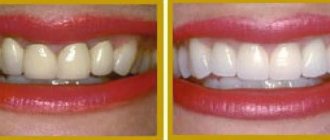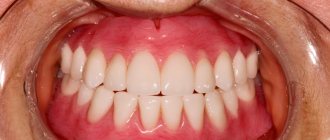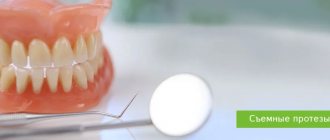Dental treatment is a complex of medical measures aimed at combating diseases of the teeth, oral cavity, jaws and border areas of the face and neck.
The relevance of the development of this branch of medicine is determined by the wide prevalence of pathologies of the dentofacial apparatus. According to official data, at least 90% of the world's population suffers from dental diseases. That is why health authorities are constantly tasked with developing measures to prevent dental diseases, studying their causes and improving treatment methods.
Therapeutic dentistry
Therapeutic dental treatment is reduced to eliminating the manifestations of dental diseases using conservative methods.
The following areas of development of this industry are identified:
- treatment of non-carious dental diseases (hypoplasia, fluorosis and enamel erosion, wedge-shaped defects, hyperesthesia and pathological abrasion of teeth, necrosis of hard dental tissues, injuries);
- fight against caries and its complications (pulpitis, periodontitis, periostitis);
- treatment of diseases of the oral mucosa (traumatic, infectious, symptomatic and specific stomatitis, glossitis, cheilitis, etc.);
- aesthetic restoration of teeth;
- dental hygiene.
It is worth noting that therapeutic sanitation of the oral cavity is the starting point for any dental procedures, both orthodontic or orthopedic, and surgical.
Periodontitis
Caries
Pulpitis
Wedge-shaped defect
Advantages of contacting PROFI-Dent
- fast and high-quality diagnostics;
- advanced treatment algorithms and techniques;
- affordable price list for dental services;
- A complex approach;
- ultra-modern technical equipment, drugs
- and latest generation materials;
- experienced, competent doctors of all specialties;
- guarantee for dental services.
Surgical dentistry
So, surgical dentistry is one of the most significant and complex sections of modern medical science. Many people mistakenly believe that the competence of specialists in this field includes only performing simple tooth extraction operations. In fact, doctors of this profile perform a huge variety of different manipulations, ranging from tooth-preserving procedures to plastic surgery.
The competence of specialists in the field of dental surgery includes:
- treatment of inflammatory processes in the oral cavity (periostitis, periodontitis, osteomyelitis, abscesses, phlegmon, etc.);
- carrying out implantation;
- treatment of tumor diseases of the oral cavity;
- carrying out tooth-preserving procedures;
- treatment of pathologies of the temporomandibular joint;
- tooth extraction;
- combating diseases of the trigeminal nerve;
- performing operations on periodontal tissues;
- elimination of malfunctions of the salivary glands;
- primary treatment of wounds in the neck, face and oral cavity;
- carrying out reconstructive and plastic surgeries.
Dental surgery is directly related to such branches of medical science as implantology, orthodontics, orthopedics and aesthetic dentistry. This is why dental surgeons work closely with specialists in these fields.
Dental services from 270 rubles at SDent in Moscow
When choosing a dental clinic, many patients are concerned about the price, which is not surprising, because dental treatment in Moscow has never been a cheap pleasure. But we are breaking stereotypes and actively introducing new standards of high-quality medicine into practice, making dental services more accessible than ever to the majority of the population. People even come to us from other cities, where prices for restoration and prosthetics are higher.
We are ready to carry out some procedures even from 270 rubles, so that even more Russians can benefit from European-level medicine in the capital. Such free dental services include professional cleaning and oral hygiene, surface polishing with preventative pastes. Our practice also offers free medical examinations and consultations with doctors, and follow-up examinations of patients after surgical interventions.
And for expensive procedures you can always use interest-free installments or a regular visitor card with a cumulative discount of up to 10% on the entire range of services.
Orthopedic treatment in dentistry
Orthopedic dental treatment is a set of measures aimed at eliminating anomalies, deformations, damage and acquired defects of the dentofacial apparatus.
Methods used by orthopedic dentists to combat the above disorders include:
- removable and fixed prosthetics;
- microprosthetics;
- installation of combined prostheses.
Modern technologies allow dentists to produce any orthopedic devices in the shortest possible time. At the same time, dentures installed in the patient’s oral cavity do not cause him any physical discomfort or aesthetic inconvenience.
Kind words from our patients
Proklov Leonid
Having received a consultation at the Adequate Dentistry clinic, I decided to take care of my upper teeth - they were very sensitive to temperature. The doctor recommended installing light fillings. They did it very quickly - I had 3 teeth filled in an hour. The filling cannot be distinguished from a tooth by its shade and shape. I also recommend this dentistry to those who have fears. The specialists are very careful and confident, they know how to calm you down. Thank you for your sensitive treatment and good work.
Vasily Lopatin
I took a vacation specifically to finally get my teeth fixed. It was possible to correct the upper teeth using cosmetic fillings at Adequate Dentistry. It was not possible to seal the lower ones with fillings, but they installed excellent crowns and metal-ceramics. Before arriving, I ordered a treatment plan, sent my dental image to the clinic specialists, and found out the cost of treatment. In general, now I have healthy, beautiful teeth, thanks to your doctors!
Spatova Valeria
Suddenly I had a toothache, I immediately rushed to look for a clinic on the Internet, of course there are many of them, so try to guess. I came across the Adequate Dentistry clinic and decided to stop there. A polite girl answered the call and made an appointment. I was very afraid, since I’ve never had problems with my teeth, and I didn’t even have a lot of treatments, but as a result, several teeth were cured, a neglected tooth root was treated, and everything went painlessly. When I went to the appointment, I was trembling with fear, but I left the office with a smile. Thank you!
Orthodontic treatment
Orthodontic treatment is a complex set of medical measures aimed at eliminating dental anomalies. The competence of orthodontists includes the correction of aesthetic disorders and functional failures that arise during the formation of the masticatory apparatus (for example, genetically determined defects). The fight against pathologies that develop as a result of diseases or injuries is the responsibility of orthopedic dentists, surgeons and therapists.
Methods used in orthodontic treatment include:
- hardware (use of braces, retainers, etc.);
- surgical;
- functional (therapeutic gymnastics, etc.);
- combined.
Timely and competent course of therapy allows patients to get rid of dental deformations, malocclusions, abnormalities in the position of teeth and other pathologies.
Methods and means used in dental treatment are constantly being improved. Today, dental clinics use the latest equipment, advanced technologies and the highest quality materials, which allows you to speed up the treatment process as much as possible and minimize discomfort. Thanks to this, fear of visiting the dentist for most patients no longer becomes an obstacle to a beautiful, healthy smile.
Concept and types of dental services
State regulation of the dental services market in the Chuvash Republic Read more: Mechanism of state regulation of the dental services market
1.1 Concept and types of dental services
Any service is a useful action that satisfies the need of the one who needs it (this is an action that benefits another) [ ].
In developing the topic of the diversity of understanding of the term “Simple medical services,” medical services are defined as follows:
Medical service is an activity or a set of measures aimed at preventing diseases, their diagnosis and treatment, which have an independent, complete meaning and a certain cost.
Dental services are a type of professional medical services focused on a special benefit - human health. Consequently, a dental service is a necessary and sufficient professional action carried out in relation to a patient for preventive, diagnostic, therapeutic and (or) rehabilitation purposes.
A dental service is understood as an event (or a set of events) aimed at the prevention of diseases of the teeth and oral cavity, their diagnosis and treatment, which has an independent complete meaning and a certain cost.
Dental services have four main features that distinguish any service from a product. These universal distinctive features are:
A) Intangibility;
B) Inseparability from the source of the service;
C) Inconsistency of quality;
D) Not preserved.
Intangibility. A patient who comes to see a dentist cannot know the outcome of the visit in advance; he is forced to simply take the dentist’s word for it. However, to increase the “tangibility” of the dental services offered, in some cases it is possible to provide some insight into the nature of a particular service. For example, you can show the patient photographs of the results of aesthetic dental restoration.
Inseparability from the sources of the service. A patient who has made an appointment with a certain dentist will receive the wrong service if, due to the absence of this dentist, he ends up with another one.
Inconsistency of quality. Doctors of different qualifications provide the same dental service in different ways, and even the same dentist can help a patient in different ways depending on his condition.
Non-preservation – dental services cannot be preserved for further provision. It is possible to provide a service only when there is a patient.
A special feature of dental services is that some of them have material attributes, i.e. specific material results in the form of fillings, various designs of dentures, implants, orthodontic devices. This circumstance significantly distinguishes dental activities from most other types of medical activities, predetermining the possible features of contractual relations in the implementation of dental practice.
It should be noted that, along with the specified material attributes, the provision of dental services is often accompanied by a number of additional services that provide one or another level of general service. So, comfortable conditions for waiting for an appointment in the lobby in front of the doctor’s office, aesthetic interior design, lack of queues, attentive attitude and courtesy on the part of the clinic staff to the patient’s requests - all these service attributes, although they do not change the professional medical essence of dental care, are still important elements of its provision.
Types of dental services
Due to the high degree of heterogeneity of dental services, their absolute unification is largely difficult. Meanwhile, you can use different approaches to the classification of dental services. For example, according to the order of the Ministry of Health of the Russian Federation dated April 10, 2001 N 113 “On the introduction of the industry classifier “Simple medical services”, according to the degree of complexity, dental services are differentiated into simple, complex and complex.
A simple dental service is an indivisible service performed according to the formula “patient” + “specialist” = “one element of prevention, diagnosis or treatment.”
Complex dental service is a set of simple dental services that requires for its implementation a certain number of personnel, special premises, technical equipment, etc., corresponding to the formula “patient” + “complex of simple services” = “stage of prevention, diagnosis or treatment.”
Complex dental service is a set of complex and (or) simple dental services that end with either prevention, or diagnosis, or the end of a certain stage of treatment, for example, sanitation of the oral cavity, prosthetics, etc., according to the formula “patient” + “ simple + complex services” = “carrying out prevention, establishing a diagnosis or completing a certain stage of treatment.”
By functional purpose, dental services are defined as:
1. Therapeutic and diagnostic - aimed at establishing a diagnosis or treating a disease;
2. Preventive - aimed at preventing the disease (professional oral hygiene, health education);
3. Rehabilitation - related to the social and medical rehabilitation of dental patients (dental prosthetics).
In addition, according to functional characteristics, dental services can be distinguished:
1. Material services related to the need to manufacture or restore (change, preserve) the consumer properties of dental products (dental and maxillofacial prostheses, etc.);
2. Intangible services that ensure the maintenance and restoration of the patient’s health without the need to perform the specified work.
By area of activity, dental services are divided into:
1. Preventive, aimed at preventing dental diseases;
2. Therapeutic, aimed at treating dental diseases;
3. Orthopedic, aimed at restoring tooth loss;
4. Surgical, aimed at removing pathologically changed tissues;
5. Orthodontic, aimed at correcting the bite and position of the teeth;
6. Children's therapeutic - aimed at treating dental diseases in children;
7. Pediatric surgical – aimed at removing pathologically changed tissues in children;
8. Children's orthopedic - aimed at restoring tooth loss in children.
1.2 The dental services market and its characteristics
The dental services market is a system of interaction between buyers and sellers of dental goods and services.
This interaction ultimately leads to exchange opportunities between market participants. Customers are defined as consumers who purchase dental products and services. Sellers include dental institutions or dentists who have permission to operate in the form of a license, carry out private dental practice, and sell dental goods and services. The market is formed on the basis of supply and demand, which are created by buyers and sellers, respectively. Ideally, it is believed that the result of market relations is that neither the buyer nor the seller will be satisfied with the results of the exchange between them.
The theory of an ideal market was described by a prominent English economist of the 18th century. Adam Smith, who assumed that the market should operate in conditions of free competition between many sellers and buyers. At the same time, sellers do not collude with each other and compete using only the prices of their own goods and services, concerned with obtaining maximum profits. At the same time, buyers are concerned with purchasing goods that best satisfy their needs, freely spending money on those that suit them best at a given time. At the same time, buyers are fully informed about the consumer properties and prices of goods.
Healthcare as a branch of the public economy has a number of characteristics that violate the operation of the market mechanism. Let's look at the most important of them.
Some medical services have the properties of “public goods”. Economic theory identifies a special type of results of economic activity - the so-called “public goods” (public goods). They have characteristics that distinguish them from consumer goods. Firstly, they are objects of collective consumption. This means that one person's consumption of services does not reduce the consumption resources available to other members of society. Secondly, public goods, unlike goods of individual consumption, are not subject to the principle of excluding other persons from the consumption process. For example, sanitation and hygiene measures inevitably become the property of large groups of the population. There is a “transport hare” effect: people receive benefits, but do not pay for them.
To meet the needs for services with the characteristics of “public goods”, the so-called “public health” sector operates in all countries. It includes services that monitor the epidemiological situation, work on the treatment of infectious diseases, engage in sanitary education, etc. The field of public health traditionally includes sanitary-epidemiological stations, public health centers, etc. These institutions are usually financed from the state budget based on the principle of maintenance, that is, their readiness to work (invested resources) is paid, and not its specific results.
It should, however, be recognized that the presence of public good properties only to a small extent explains the violation of the market mechanism in health care. These properties are present in a relatively small proportion of medical services. Treatment services, for example, restoration of missing teeth, are not endowed with the characteristics of public goods; their consumption is strictly individual and has no external effect. That is, these services have the properties of a private good.
Other characteristics of health services are much more important. They determine deviations from the usual market model. Economic theory defines these deviations as “market failures.” These include:
1. Lack of consumer awareness;
2. The inability to independently select the necessary services;
3. The impossibility of independently choosing the required volume of services provided, since the choice is determined by the provider of the services - the doctor;
Lack of consumer awareness. The market can be a reliable regulator of resource allocation only if the consumer is fully informed and independent of the manufacturer of goods. In healthcare, these conditions, as a rule, are not met; in addition, a sick person, as a consumer of medical services, does not have the knowledge that would allow him to assess the volume and price of purchased services. It is difficult for him to choose a doctor who can provide the service at a lower price.
In many cases, the consumer cannot make a rational choice of the necessary services due to his illness, and sometimes as a result of temporary or complete incapacity.
Unlike conventional markets, in health care it is the producer, not the consumer, who determines the volume of benefits provided. Doctors act in two persons - as agents of patients, determining the extent of their needs and the volume of necessary services, and as producers of these services. In other words, doctors determine not only the supply of services, but also the demand for them. As a result, there may be a conflict between the medical and economic interests of doctors. They may exaggerate the volume of necessary procedures, exclude cheap substitutes from the range of goods and services, select those types of services that ensure the full load of clinics, etc.
Economic theory operates with the concept of supply-induced demand. We are talking about imposing on the patient services that are not very necessary or not at all necessary to achieve a clinical result, but are necessary for producers of medical services to ensure their economic interests.
Information “asymmetry” between the supplier and consumer of dental services distorts the usual interaction of supply and demand. Suffice it to say that in countries where dental care is paid for each individual service (fee-based principle), the volume of these services is noticeably higher than in countries where this care is paid for as a fixed amount per patient (capitation principle). Thus, in Germany and France, which belong to the first group of countries, the number of dental visits is 11.5 and 7.2 per capita, respectively. In the UK, where doctors are paid on a capitation basis, there are only 5.5 visits per person per year.
It is possible to schematically show the differences between a perfectly competitive market and the market structure that is typical for the dental services market as a whole (Table 1.1).
Table 1.1
Distinctive characteristics of the dental services market
| Perfectly competitive market | Dental services market |
| A large number of sellers. | The number of sellers is limited and there are restrictions on entering the market. |
| Product homogeneity. | Heterogeneity of dental services, its individuality, uniqueness. |
| Good customer awareness. | Information "asymmetry". |
| The ability to compare the price of a product and its quality. | Impossibility or difficulty of comparing price and quality. |
| Manufacturers strive to maximize profits. | The presence of a large number of public and private. |
| Products are usually sold directly. | In most cases, the participation of a “third party” is required - a competent intermediary, who pays for a significant part of the medical services. |
Based on the above comparison, it can be argued that the dental services market, from the point of view of organizational structure, is a market of imperfect competition. At the same time, in terms of its main characteristics, it is more similar to structures that are classified as oligopoly in economic theory (Appendix 2). These circumstances inevitably leave their mark on the behavior of producers, changes in their primary goals, and the pricing system, which also requires specific regulation of the ongoing processes in these market structures by the state.
Today, the dental services market is organized as an oligopoly. Market access is limited. There is partial control of prices for services. A situation is emerging when patients are looking for “their” doctor—one who will not deceive and will provide the highest quality services for a certain price.
The special role of the principles of accessibility and equality in obtaining medical care. The volume of consumption of medical services cannot be determined only by the level of a person’s solvency. This is especially evident in cases where emergency medical care is required to reduce suffering and save a person's life.
The need to adjust the market mechanism for allocating resources is also dictated by the fact that people with low incomes have the greatest need for medical care, including dental care. They have worse living and working conditions; accordingly, their health indicators are lower than those of the wealthy segments of the population.
Ensuring equal opportunities in the consumption of medical services dictates the need to redistribute the healthcare budget in favor of those most in need - the elderly, children, people with low incomes, chronically ill people, etc. The basis for the development of the industry is the principle of social solidarity: the rich pay for the poor, the healthy for the sick . The implementation of this principle requires active government intervention.
We have listed the main specific characteristics of the dental services market that limit the possibilities of market self-adjustment in the healthcare sector. From this we can draw the following conclusions.
1. Information “asymmetry” combined with the possibility of irrational consumer behavior increases the likelihood of the formation of a cost mechanism in healthcare, especially in dentistry. Manufacturers of dental services in a market environment do not have sufficient constraints for the rational use of resources. They can expand the scope of services to ensure the utilization of existing capacities (dental equipment, etc.) and increase their income. If this process is not managed, the share of expensive types of dental services and the overall costs of treatment will increase. Interest in disease prevention and the use of relatively simple but effective dental technologies will decrease.
2. The specifics of the dental services market determine the possibility of contradiction between actions aimed at increasing local and structural efficiency. Local (internal) efficiency characterizes the results of using resources in a specific dental organization. Structural efficiency characterizes the results of resource use in the health care system as a whole. The famous American economist Peter Drucker defined the difference between these two concepts as follows: “Local efficiency is the ability to do things in the right way. Structural efficiency is the ability to do the right things.”[ ].
In conditions where decisions on the volume and composition of dental services are made by their producers themselves, payment of dentists for a specific service leads to an increase in the volume of services per unit of resources expended. The local efficiency of the functioning of dental organizations is increasing. As for structural efficiency, market mechanisms do not automatically increase it. The interest of a particular dentist in increasing the volume of services does not always lead to an increase in the final results of the system as a whole.
In summary, lack of patient awareness, coupled with the special role of dentists in determining the scope and structure of dental services, poses a significant potential for structural imbalances in dentistry. Unlike most other sectors of the economy, in healthcare, especially in dentistry, the market mechanism for allocating resources does not guarantee the efficient use of resources in the system as a whole.
3. To increase structural efficiency, it is necessary to ensure targeted management of the volume and structure of dental care provided to the population. The subjects of management may be different depending on the prevailing principle of financing dentistry. In its most general form, this is a financier, that is, an organization that orders volumes of dental care from a manufacturer of dental services and pays for these volumes.
Examples of problems solved by the funding party:
— how to choose the most economically rational treatment option for a particular case without compromising the quality of care;
— how to ensure the participation of doctors in the search for resource-saving technologies;
— how to stimulate public interest in a healthy lifestyle and optimize patient behavior.
The financing party must do what an individual patient is unable to do due to lack of awareness and weak ability to influence doctors, plan the provision of dental care, ensure an optimal balance between its individual types, and interest dentists in the most rational use of resources.
The particular importance of accessibility and equality in receiving medical care dictates the need for specific forms of government regulation, which are either completely absent in other sectors of the market economy, or are much less pronounced. First of all, the state undertakes to finance a significant part of dental care for the population. For this purpose, mechanisms of income redistribution are used - based on general taxation or targeted taxes for healthcare needs. In addition, the state takes upon itself the direct provision of part of medical care - not only those types that have the properties of “public goods”, but also services whose consumption is individual, for example, free dentures for privileged groups of citizens.
The government, in one form or another, regulates prices in the public health care system, sets standards of dental care to protect patients, licenses dental organizations, plans labor and material resources, and performs many other regulatory functions. Most of these functions are determined by the desire of the state to neutralize the “mistakes” of the market.
State regulation of the dental services market in the Chuvash Republic Read more: Mechanism of state regulation of the dental services market
Information about the work “State regulation of the dental services market in the Chuvash Republic”
Section: Management Number of characters with spaces: 201246 Number of tables: 34 Number of images: 3
Similar works
Systematic approach as a tool for marketing analysis of territories
58763
0
0
... and quantitative indicators and indicators characterizing the effectiveness of solving individual problems and the effectiveness of managing the region as a whole. systematic approach marketing analysis Chapter II. Practical application of a systematic approach for marketing analysis of a territory using the example of a study of the Kozlovsky district of the Chuvash Republic Analysis of the economic and geographical location ...
Healthcare problems in Russia
144670
0
0
... may lose his position. The higher authorities have plenty of opportunities for this. The legal vulnerability of the head of a medical institution is another serious problem that limits the scope of the legal field in healthcare. In conclusion, we note that we have touched upon only a small part of the issues related to the legal framework for reforming the health care economy, but...
Social work with older people
122309
8
3
... target program “Older Generation” for 2002-2004”//Social service worker. 2002, No. 4.-p.102 33. Pyatnitsky B.P., Nesterova N.M. and others. Fundamentals of social work with older people: To help the social worker. – Novosibirsk Regional Gerontological Center. 2003.-p.53 34. Pyatnitsky B.P., Shakalin D.A. Extending the active life of the elderly // Social service worker. 2005, No. 2.-p.23 ...
Other dental diseases: list of dental diseases with photos
Next, we propose to analyze ailments that may appear as a result of teething or age-related changes.
Grinding
A pathology in which there is a rapid decrease in hard tissue. Provokes thinning of enamel and damage to dentin. It can affect both individual units and full-fledged rows.
Erosion
A process in which a violation of enamel integrity is recorded. Some areas are damaged symmetrically. Main signs: changes in pigment, various cosmetic defects, painful reaction to cold or spicy food.
Pathological resorption
Loss of root tissue caused by chronic diseases, advanced periodontal disease or progressive pulp disease. It can be one-sided or combined. In the absence of rehabilitation and therapeutic therapy, tooth loss occurs.
Deposits and build-ups
They are mineralized residues that form above or below the gums. The main material for formation is food particles, the results of the activity of pathogenic microorganisms, as well as components of saliva. They trigger processes that provoke periodontitis.
How to determine that you need to see a dentist?
All clinical signs of problems in dentistry can be divided into subjective and objective.
Subjective symptoms are those that the patient independently pays attention to and on the basis of which he seeks dental treatment. During the appointment, the doctor interviews the patient, clarifies the complaints, details each of the signs and suggests what pathology is present in this case. Subjective complaints include:
- pain
may be permanent or paroxysmal, localized in one tooth or spread to several teeth. The pain may intensify after exposure to mechanical, temperature, chemical irritants, disturb you at night and disturb sleep. It is also important to clarify the nature of the pain - dull, aching, sharp;
- discomfort in the oral cavity: burning, itching, tingling, discomfort;
- feeling of teeth mobility, loosening, crumbling;
- bad breath;
- increased sensitivity of teeth to cold, hot, sweet, sour, when brushing your teeth or when chewing hard foods;
- bleeding gums when brushing teeth.
Objective symptoms are those that the dentist can evaluate during an examination. These include signs such as:
- the presence of carious cavities in the teeth, darkening of the teeth, chipped teeth, defects in existing fillings;
- swelling, redness of the gums;
- bleeding of soft tissues upon probing;
- changes in the oral mucosa;
- changes in bite, incorrect closure of the upper and lower teeth, incorrect position of individual teeth;
- presence of gaps between teeth;
- exposure of tooth roots due to gum recession;
- tooth mobility.
You need to visit a dentist if you experience at least one or more symptoms. Also, go to a specialist if more than 6 months have passed since your last visit. Over six months, the condition of your teeth can change greatly, but there may be no symptoms. Dental treatment before pain occurs is ideal. At the same time, treating dental problems at an early stage is always simpler, cheaper and has less risk of complications.
What can happen if you delay dental treatment for a long time?
Early diagnosis and timely treatment are the best options for maintaining dental health. If treatment is delayed, the following complications may occur:
- progression of the disease and transition to a severe form;
- the spread of pathology is not adjacent teeth;
- involvement of soft tissues in the process (abscesses and phlegmon of soft tissues of the face);
- odontogenic process in the ENT organs and soft tissues of the face, neck (for example, inflammation in the maxillary sinuses = sinusitis);
- generalization of inflammation, sepsis.
In order for the treatment to be of high quality and solve the problem, it is necessary to choose a modern clinic with innovative equipment and professional staff. A good dentist always approaches the problem comprehensively, treating not the symptoms, but the cause of the pathology. You will understand that this is a specialist, if he explains in detail the essence of the problem and will comment on each stage of treatment. An important point is to consult a doctor at the end of treatment - he should give recommendations on oral care and schedule the next consultation. A competent doctor observes the rules of sterility and works with modern instruments and materials.
Do not put off dental treatment “for later” and promptly seek quality dental care in St. Petersburg.
Cost of services
A-Medic Medical Center provides affordable dental services in Moscow. On the clinic’s website you can see the preliminary cost for all services. The exact price is announced only after consultation.
Our clinic offers favorable conditions for paying for expensive or “Dentistry on credit”, you can familiarize yourself with all the conditions for postpayment.
Pre-registration is available for each patient by phone or on the clinic website. Our center provides free consultation and treatment plan services. If you dream of a beautiful and healthy smile, we are waiting for you!
Let's sum it up
Dentistry studies the etiology, symptoms, and treatment features of the most common dental diseases. There are a huge number of reasons that provoke oral problems. Some of them are easily eliminated, others are subject to only partial correction. However, for both cases the rule is true: the sooner you start working on dental treatment, the higher the likelihood of a favorable outcome. That is why it is important not to let things take their course and undergo regular medical examinations.
Whitening
Many young people believe that white teeth are an important attribute of a beautiful face. However, naturally white enamel is quite rare, so the whitening procedure is popular. Although you can get good results with modern whitening methods, there are unscrupulous specialists who use harmful bleaching agents and ineffective folk methods that can harm the enamel.
There are two types of teeth whitening methods: professional and home.
Whitening at home is carried out using special whitening toothpastes and homemade products. Typically, home whitening is less effective than professional whitening.
Professional whitening is carried out using special equipment and comes in several types.
One of the most gentle whitening methods is ultrasonic. This type of whitening is quite effective and practically does not harm the tooth, but its cost is high compared to other methods.
Chemical whitening is highly effective , but this method has a large number of side effects and therefore it can only be recommended to owners of absolutely healthy teeth.
Whitening can be done very quickly using a laser, but this is not the safest method, which is also quite expensive.
Photo whitening is used for sensitive and diseased teeth. However, this method can lead to an unnatural color of the teeth, which is why this method is used quite rarely.










